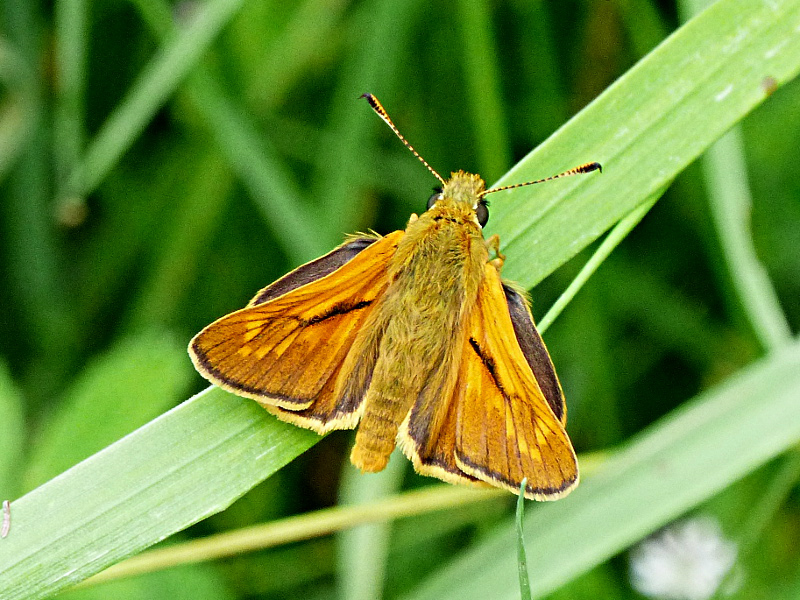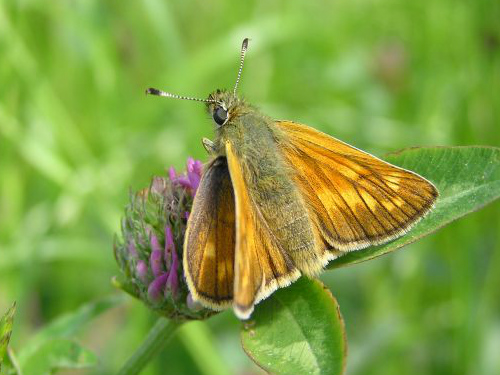
| Butterfly Conservation |
 |
| Hertfordshire & Middlesex Branch |
 |
|
|||
| Saving butterflies, moths and our environment | ||||


Large SkipperOchlodes faunusWidespread and common resident Distribution and Status The Large Skipper appears to be coping better than our other 'golden' skippers in our area. In the 1980s it was well distributed in Hertfordshire, and in Middlesex, mostly in the north and east. It had spread into other areas in the 1990s whilst disappearing from parts of north-east Hertfordshire. It became slightly more abundant since the beginning of the century, but a notable decline has occurred since 2015 either because of loss of suitable habitat or changes in agricultural practices. Like the Small and Essex Skippers, nectar sources are important for females to develop their eggs (Field et al.) Habitat Requirements Unimproved grassland, for example on roadside verges, woodland clearings, railway embankments and waste ground but it prefers shadier sites than the Small and Essex Skippers Larval Foodplants Cocks-foot Dactylis glomerata is the preferred foodplant in the county, but False Brome Brachypodium sylvaticum and Purple Moor-grass Molinia caerulea are also occasionally used Adult Food Sources Common Bird's-foot Trefoil Lotus corniculatus, Bramble Rubus fruticosus agg., Red Clover Trifolium pratense, Thistle Cirsium sp. Behaviour/Observation notes Like the Small and Essex Skipper, early mornings and evenings, or cloudy weather are good times to find this species resting or basking, offering opportunities to take close-up photographs. When the sun is shining, males in particular, are far more active Life History The butterfly generally emerges in June with a long season lasting until the middle of August. The last week of June is the peak period as indicated on the chart. The eggs are laid beneath leaf blades in sunny sheltered situations. Larvae hatch from the end of July to form tubes from several leaf blades and enter hibernation in this stage. Pupae are formed within cocoons using silk, in late spring Further information
Identifying Skippers References
Field, R.G, Watkins, G. and Gardiner, T. (2005), The Use of Countryside Stewardship Scheme Field Margins by the Small Skipper Thymelicus sylvestris, Essex Skipper Thymelicus lineola and Large Skipper Ochlodes venata, The Entomologist's Record and Journal of Variation, Vol 117 Pt 5 pp. 197-203 |
Copyright Butterfly Conservation © 2019 Hertfordshire & Middlesex Branch
Privacy and Copyright Statement and Cookie Policy Statement
Butterfly Conservation
Company limited by guarantee, registered in England (2206468)
Registered Office: Manor Yard, East Lulworth, Wareham, Dorset, BH20 5QP. Tel: 01929 400 209
Charity registered in England & Wales (254937) and in Scotland (SCO39268). VAT No. GB 991 2771 89